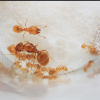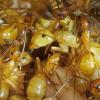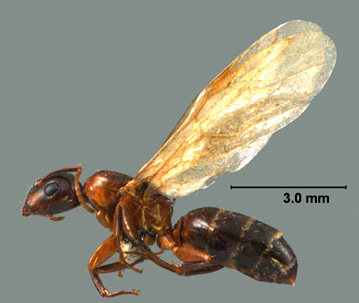Here is a picture of a Camponotus subbarbatus queen from the web (all of my queens look exactly like this, I just don’t want to disturb them). The queen that I am trying to ID does not have the yellow stripes, or even yellow at all. Plus, the thorax is bright orange, whereas on C. Subbarbatus the thorax can range from black to dark red. There is no way that this queen is C. Subbarbatus unless it is some uncommon variety, but I highly doubt it. I will attempt to get better pictures tomorrow as I know these ones have bad glare.
As a rule color means nothing in taxonomy. I think to properly ID this we may have to look at body structures and such. Color aberrations exist in all forms of life.




























